Secure your future today!
Health First -Stretching and Flexibility
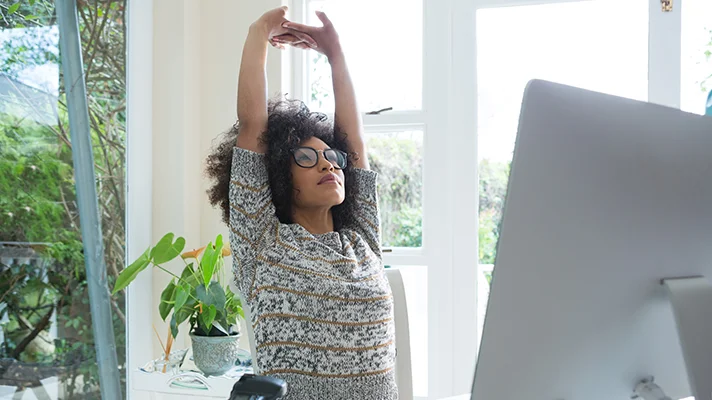
Good health is critical to strain and sprain prevention. Stretching and flexibility is an important part of staying healthy. Stretching increases flexibility, improves circulation, and decreases muscle tension. These guidelines do not provide an exercise program. It is very important to consult your physician regarding exercises. Also consult your physician if you have any questions or concerns regarding exercise, stretching, and your physical condition.
Performing a few simple stretching movements will help keep you comfortable and reduce the risk for a strain injury because stretching warms up muscles, improves flexibility, and helps circulation. When is the best time to stretch? Some people prefer to stretch on a schedule such as the start of the day, after lunch, or before starting work. Athletes always warm up and stretch before practice or performing.
Our pets may provide the best example of when to stretch. Huh? Watch your dog or cat. They stretch after sitting or lying for periods of time and before starting to move. Stretching is natural to them and it’s rare for an animal not to stretch, even briefly, before moving around.
Stretching is most effective if you are consistent and do it on a routine basis. It also takes very little time to perform stretches so they can be performed at different times of the day. Consider a brief warm up and stretch for the following situations:
- After working in a static awkward posture. Examples include: reaching, kneeling, bending, or sitting in a chair.
- Driving or operating equipment for an extended period of time.
- Prior to starting your day, before starting a long or difficult task, or after breaks.
- Take a few seconds for a break and to rest and then stretch if discomfort is felt.
General Stretching Guidelines
- Breathe and don’t hold your breath
- Start easy to warm up muscles
- Always stretch gently
- Avoid jerky movements or extreme postures
- Stop if pain or discomfort occurs
Strain Prevention Formula
Walking is the best and easiest activity for warming up and even a short walk is a good place to start. Don’t worry if you don’t feel like a professional yoga instructor. Small changes can make big differences so add stretching to your strain prevention formula:
- Maintain good health
- Stretch and warm up
- Plan the task
- Use good techniques
Arms, Shoulders, and Rib Cage
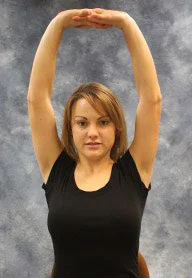
- Interlace your fingers and gently press your hands upward with your palms up.
- Stretch arms slowly and hold for a few seconds.
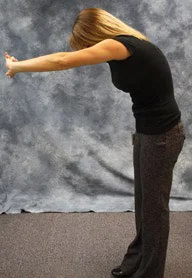
- Another method is to press the hands forward at shoulder level.
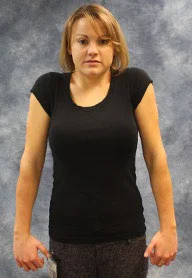
- Slowly move your shoulders in a circular motion with hands at side.
- Complete full circles.
- Reverse the direction for backward circles.
Wrist and Hands
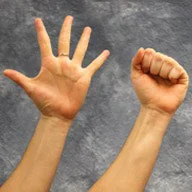
- Hold your arm in a comfortable position.
- Make a fist for a few seconds.
- Stretch your fingers and hold for a few seconds.
- Don’t squeeze hard.
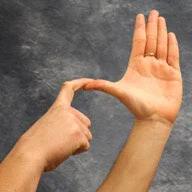
- Gently pull the thumb of one hand down and out to the side and hold five seconds.
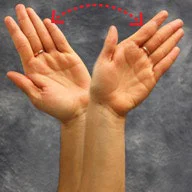
- Hold your hands out with your elbows at your side.
- Bend your wrist down.
- Gently and slowly rotate your wrist a few times.
- Repeat in the opposite direction.

- Hold your hands out with your elbows at your side and palms down.
- Gently bend your wrist down and back up a few times.
Lower Back and Hips
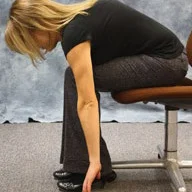
- While exhaling, slowly lower your head and roll toward your knees.
- Let your hands drop at your ankles.
- Hold five seconds.
- While inhaling, slowly roll back up to a sitting position.
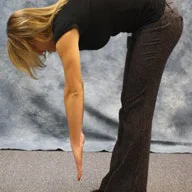
- This can also be done while standing. Breathe and move slowly.
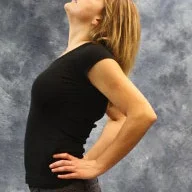
- Place your palms on your lower back.
- Gently lean and stretch backwards.
- Don’t’ go too far! Hold for a few seconds and return upright.
- This can be done while sitting or standing.
Legs
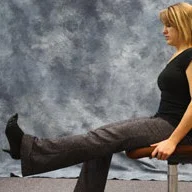
- While sitting, slowly straighten your knee and extend your leg.
- Use your arm rests for balance.
- Slowly return your foot to the floor and repeat with the other leg.
- Repeat the movements, but don’t perform more than a few repetitions.

- While sitting upright and using your back support, grasp your knee and gently pull it toward your chest.
- Hold for five seconds and repeat with the other leg. This can be done while standing using one hand.
- Make sure that you maintain your balance by holding onto a stable object.
- Make sure that the object won’t tip or roll.
- Don’t do this while standing if there is any question about stability.
- You can also do this at home while lying on your back.
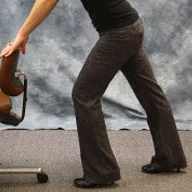
- Stand with your feet staggered and one slightly forward.
- Lean slightly forward over your front foot and hold for a few seconds.
- Slowly return and repeat with the other leg.
- You can perform a few repetitions, but not more than five.
Additional Safety Topics
Check Out All Our Products
Commercial Insurance Built for You
We offer a wide range of Commercial insurance products. Find the product that's right for you!
Types of Business InsuranceGet Insurance for Your Car and Home
You need to protect more than just your business. Get insurance for your personal property too!
Personal Lines InsuranceWe've Got You Covered!
We offer Personal Lines Insurance in five states: Ohio, Michigan, Illinois, Indiana, and Wisconsin.
Insurance for All Types of Farms
Hastings offers a range of products specifically designed for farmers.
Farm InsuranceWe've Got You Covered!
We offer Farm Lines Insurance in five states: Ohio, Michigan, Illinois, Indiana, and Wisconsin.
Secure your future today!
Hastings Insurance Company
404 E. Woodlawn Ave.
Hastings, MI 49058
Monday-Friday
8:00 a.m. - 4:30 p.m. (EST)
(800) 442-8277
Terms of Use and Privacy Statement© Hastings Insurance Company. All rights reserved.



